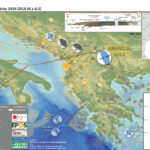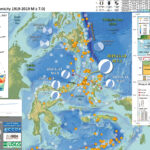A couple days ago there was a deadly earthquake along the coast of Albania near the cities of Durrës and Mamurras. This M 6.4 earthquake caused many deaths and significant damage to buildings. https://earthquake.usgs.gov/earthquakes/eventpage/us70006d0m/executive The west coast of Albania is…
Earthquake Report: Halmahera, Indonesia
While I was back in the Ridgecrest, CA area further documenting our slickenline observations from the 5 July 2019 M 7.1 Ridgecrest Earthquake, there was a tsunamigenic earthquake in the Molucca Sea near Halmahera, Indonesia. Some of my earliest earthquake…


